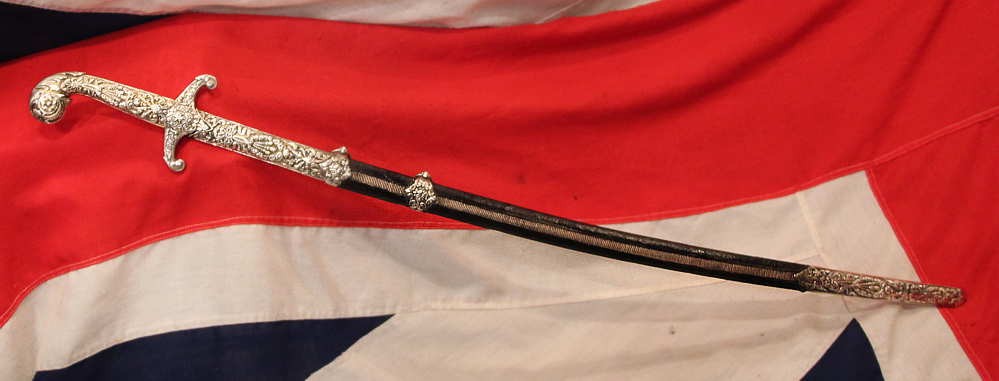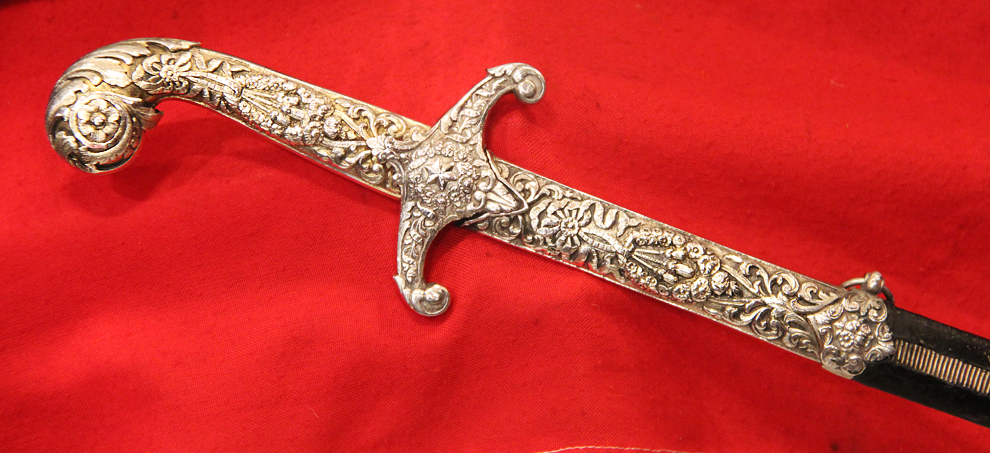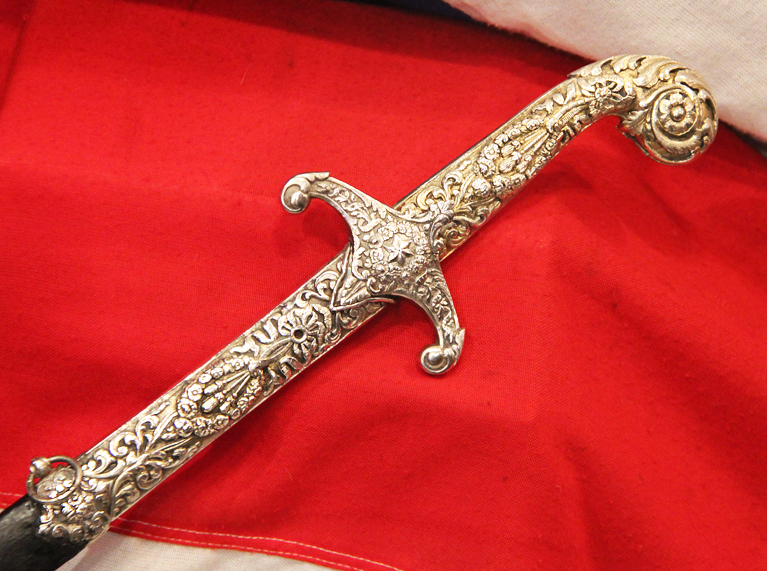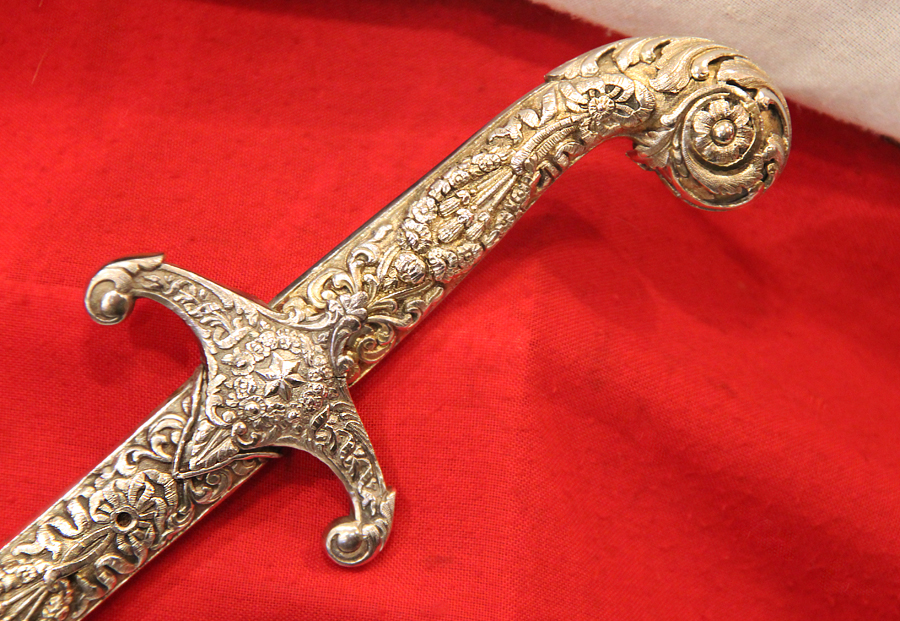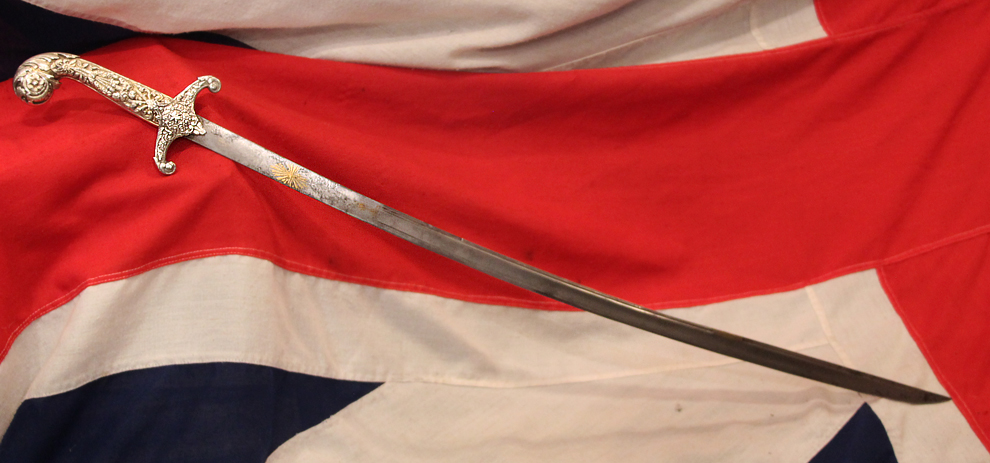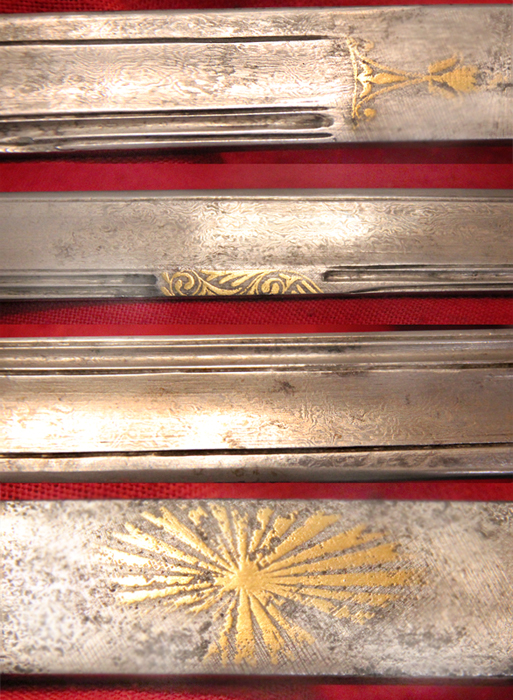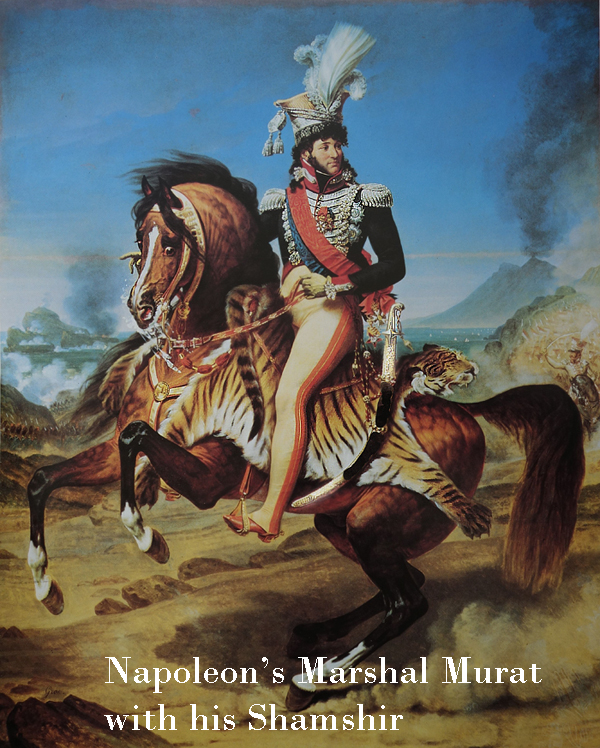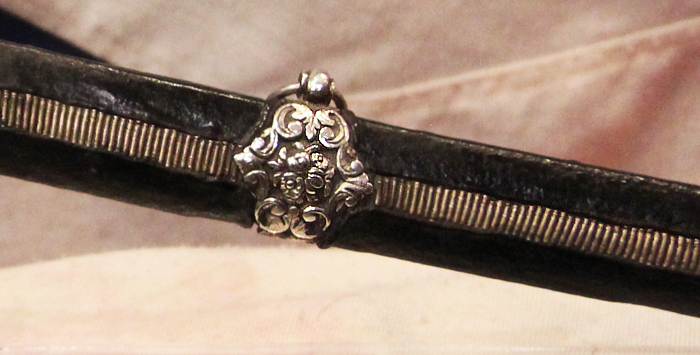SOLD One of The Most Beautiful, Original & Historical Swords One Will Ever Likely To See A Fantastic Silver Mounted Napoleonic 18th Century Sword-Shamshir Used Into the Early 19th Century
SOLD Mr L USA A museum worthy spectacular sword, that would be just as at home in the great French Military Museum in Paris, Les Invalides, in the British Royal Armouries, or indeed in any of the finest private collections in the world.
From the Napoleonic wars period of the Anglo French Battle of the Nile, and of magnificent, singularly fine quality, absolutely of the level as would befit Napoleon himself as he did indeed have such a silver shamshir or one of his Marshals such as Murat, Ney, Bernadot, Soult or de Grouchy. In fact Murat also had a shamshir almost identical to this sword. If this sword could be provenanced to one of Napoleon's Marshals it could easily be worth £200,000 plus, and if it were once Napoleon's it could be as high as $6,400,000. The price one of his swords sold for in 2007. It has a 79.75cm slightly curved triple fullered wootz Damascus blade with inlaid gold decoration, with a characteristic solid silver gilt hilt, deeply, most finely chiselled with scrolling foliage, flower heads and acanthus scrolls, contained within its solid silver mounted leather wrapped wooden scabbard, all superbly decorated to match. Made within the Ottoman Empire, likely for the equivalent to an Ottoman prince, or a French General as this very type of sword became absolutely de riguer throughout all of the army senior officer corp of both France and later, Britain. Predominantly, due to the Ottoman shamshir swords that were presented and thus worn by Napoleon Bonaparte for his Egypt campaign at the Nile, against Nelson, and that consequently duly influenced all of the French generals to follow suit to carry such a shamshir, and they were quickly followed by all the British General staff as well. For simply put, fashion, by tradition, knows no boundaries. A fashion that was created by all of the senior officer's from their experiances of Nile campaign, of both ther French and British protagonists. And the fashion of wearing the shamshir thus flowed throughout all of the general staff of Wellington's officers. So much so infact, that the British general officers sword of today is still the Ottoman style shamshir, or as we call it, the mamaluke. The Battle of the Nile (also known as the Battle of Aboukir Bay; French: Bataille d'Aboukir) was a major naval battle fought between the British Royal Navy and the Navy of the French Republic at Aboukir Bay on the Mediterranean coast off the Nile Delta of Egypt from the 1st to the 3rd of August 1798. The battle was the climax of a naval campaign that had raged across the Mediterranean during the previous three months, as a large French convoy sailed from Toulon to Alexandria carrying an expeditionary force under General Napoleon Bonaparte. The British fleet was led in the battle by Rear-Admiral Sir Horatio Nelson; they decisively defeated the French under Vice-Admiral Francois-Paul Brueys d'Aigalliers.
Bonaparte sought to invade Egypt as the first step in a campaign against British India, part of a greater effort to drive Britain out of the French Revolutionary Wars. As Bonaparte's fleet crossed the Mediterranean, it was pursued by a British force under Nelson who had been sent from the British fleet in the Tagus to learn the purpose of the French expedition and to defeat it. He chased the French for more than two months, on several occasions missing them only by a matter of hours. Bonaparte was aware of Nelson's pursuit and enforced absolute secrecy about his destination. He was able to capture Malta and then land in Egypt without interception by the British naval forces.
With the French army ashore, the French fleet anchored in Aboukir Bay, 20 miles (32 km) northeast of Alexandria. Commander Vice-Admiral Fran?ois-Paul Brueys d'Aigalliers believed that he had established a formidable defensive position. The British fleet arrived off Egypt on 1 August and discovered Brueys's dispositions, and Nelson ordered an immediate attack. His ships advanced on the French line and split into two divisions as they approached. One cut across the head of the line and passed between the anchored French and the shore, while the other engaged the seaward side of the French fleet. Trapped in a crossfire, the leading French warships were battered into surrender during a fierce three-hour battle, while the centre succeeded in repelling the initial British attack. As British reinforcements arrived, the centre came under renewed assault and, at 22:00, the French flagship Orient exploded. The rear division of the French fleet attempted to break out of the bay, with Brueys dead and his vanguard and centre defeated, but only two ships of the line and two frigates escaped from a total of 17 ships engaged.
The battle reversed the strategic situation between the two nations' forces in the Mediterranean and entrenched the Royal Navy in the dominant position that it retained for the rest of the war. It also encouraged other European countries to turn against France, and was a factor in the outbreak of the War of the Second Coalition. Bonaparte's army was trapped in Egypt, and Royal Navy dominance off the Syrian coast contributed significantly to the French defeat at the Siege of Acre in 1799 which preceded Bonaparte's return to Europe. Nelson had been wounded in the battle, and he was proclaimed a hero across Europe and was subsequently made Baron Nelson although he was privately dissatisfied with his rewards. His captains were also highly praised and went on to form the nucleus of the legendary Nelson's Band of Brothers. Price shown is not its actual cost it is shown for the partial net balance total only, this item is already sold to Mr. L of Calif. USA
Code: 22119
Price
on
Request

